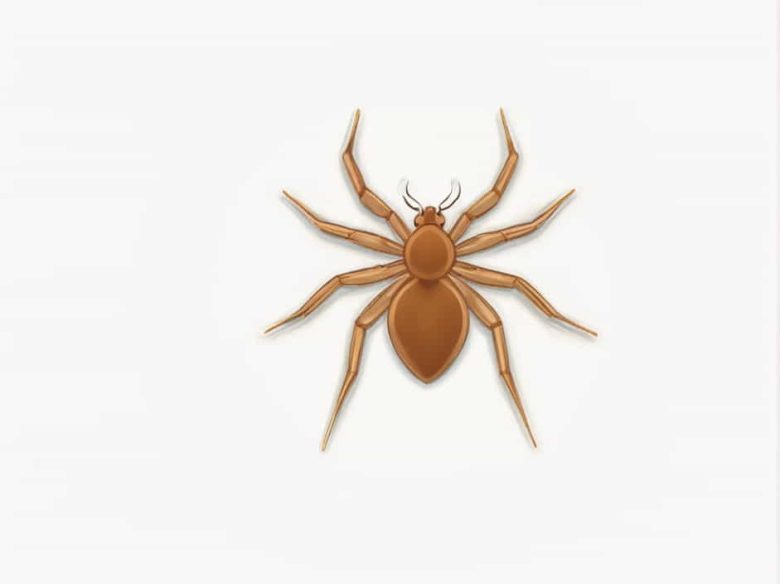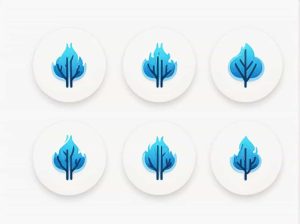The brown recluse spider (Loxosceles reclusa) is one of the most feared spiders in North America. Known for its venomous bite it can cause necrotic skin reactions in severe cases. However many harmless spiders are often mistaken for the brown recluse.
Understanding its physical characteristics is crucial for accurate identification and avoiding unnecessary panic. This topic will provide a detailed description of what a brown recluse looks like where it is found and how to differentiate it from similar spiders.
1. Physical Appearance of a Brown Recluse
a) Size and Body Structure
- Adult brown recluses are small to medium-sized spiders.
- Body length (excluding legs) is about 6 to 11 mm (0.25 to 0.5 inches).
- With legs extended they can reach about 2.5 cm (1 inch) in diameter.
- Slim and delicate body structure compared to bulky spiders like wolf spiders.
b) Color and Markings
- As the name suggests they are typically light to dark brown.
- Some may appear yellowish-tan or grayish-brown.
- The most distinctive marking is the violin-shaped pattern on their cephalothorax (head and thorax).
- The neck of the violin points toward the abdomen.
- Not all brown recluses have a visible violin mark so other features are also important for identification.
c) Eyes and Facial Features
- Brown recluse spiders have six eyes arranged in three pairs (dyads).
- Most spiders have eight eyes so this is a key differentiating factor.
- The eyes are positioned in a semi-circular pattern.
d) Legs and Movement
- Legs are long thin and covered with fine hairs but lack spines.
- Brown recluse spiders move smoothly and quickly when disturbed.
- Their legs are uniform in color without stripes or banding.
e) Abdomen and Spinnerets
- The abdomen is round and uniform in color without spots or markings.
- The spinnerets (silk-producing organs) are short and not easily visible.
2. Where Are Brown Recluse Spiders Found?
a) Geographic Range
- Native to the central and southern United States.
- Common in states like Missouri Kansas Oklahoma Texas and Arkansas.
- Rarely found outside these areas unless accidentally transported.
b) Preferred Habitat
- Dark undisturbed areas such as basements attics sheds and crawl spaces.
- Prefer dry environments like cardboard boxes woodpiles and behind furniture.
- Often found inside shoes clothing or bedding that hasn’t been disturbed for a while.
3. How to Differentiate a Brown Recluse from Similar Spiders
Many non-dangerous spiders resemble the brown recluse. Here’s how to tell the difference:
a) Wolf Spiders vs. Brown Recluse
- Wolf spiders are larger and hairier.
- Have eight eyes arranged in three rows unlike the six-eyed brown recluse.
- Their legs are thicker and more robust.
b) House Spiders vs. Brown Recluse
- House spiders have spotted or patterned abdomens while brown recluses do not.
- Their legs are banded or striped unlike the recluse’s uniform-colored legs.
c) Hobo Spiders vs. Brown Recluse
- Hobo spiders have a more oval-shaped abdomen.
- They lack the violin marking.
- Found in the Pacific Northwest where brown recluses are uncommon.
4. What to Do If You Spot a Brown Recluse
a) Precautionary Measures
- Do not touch or handle the spider.
- Use a glass jar or container to safely trap it if needed.
- Wear gloves when cleaning storage areas or moving boxes.
b) Controlling Infestation
- Reduce clutter in basements attics and garages.
- Seal cracks in walls floors and windows.
- Use sticky traps in hidden areas to monitor activity.
- Contact pest control professionals if infestation is suspected.
5. What Happens If a Brown Recluse Bites You?
a) Symptoms of a Brown Recluse Bite
- Initial bite may be painless or feel like a mild sting.
- Redness swelling and mild burning sensation may develop.
- In some cases the bite can cause necrotic skin damage (dead tissue).
- Severe reactions are rare but possible especially in children and the elderly.
b) First Aid for a Brown Recluse Bite
- Wash the bite area with soap and water.
- Apply a cold compress to reduce swelling.
- Keep the affected limb elevated.
- Seek medical attention if symptoms worsen.
The brown recluse spider is small but distinctive with a violin-shaped marking six eyes and long legs. It prefers dark undisturbed areas and is mainly found in the central U.S.. Although its bite is venomous not all bites cause severe reactions. By understanding its appearance and behavior you can identify and avoid unnecessary fear while staying cautious.



